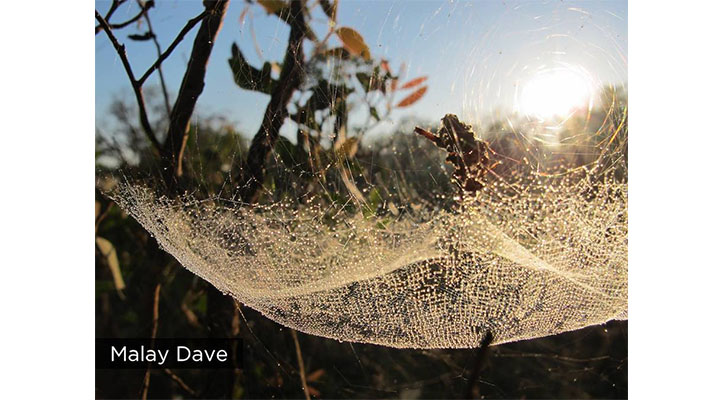
UNSW Built Environment HDR students Malay Dave and Behnaz Avazpour are among the winners in the Living Future Institute Australia Biophilia (LFIA) 2018 Photography Awards.
Established in 2012, the LFIA fosters an international vision for socially just, culturally rich and ecologically restorative communities. The awards are part of the LFIA’s Biophilia Design Initiative which aims to reconnect the aspects of nature within built environments and communities.
Mr Dave was announced as the overall winner of the competition and the winner of the People’s Choice Award, while Ms Avazpour took out the Place-Based Relationships category.
Mr Dave, a graduate of the Master of Sustainable Development, said that his interest in sustainability practices clearly aligns with the concept of biophilia or design features that reconnect people with nature.
He credits his interest in the LFIA to meeting Visiting Fellow Professor Stephen Kellert, a pioneer of Biophilia Theory, at a UNSW Built Environment speaking event in 2013.
“Since then I have been constantly aware of biophilic design in different forms and manifestations within the built environment,” he said.
“When the LFIA launched the inaugural photography award, I thought I should enter a few of my existing photos that captured some of the special moments I have had in the Australian natural environment.”
Mr Dave, who is also a course convenor for the Sustainable Built Environment programs, is now completing a PhD in High Performance Prefab Housing at UNSW Built Environment.
He said that his interest in photography helps him capture and incorporate the aesthetics of biophilic design in his research.
“Biophilic design elements, if integrated carefully, can also be quite effective in helping achieve high performance in prefab housing,” he said.
“Although it was an indirect interaction, this engagement with biophilia has been quite a rewarding process in itself – winning the award was actually a pleasant surprise and a bonus,” he said.
He also commended the LFIA initiative for raising awareness of the importance of biophilic design amongst the built environment field.
“It is getting much greater attention within sustainable built environment thanks to its inclusion within rating and assessment standards such as Living Building Challenge and other efforts by the International Living Future Institute (ILFI) and the LFIA,” he said.

Seagulls at Potts Point, Sydney. Photo: Behnaz Avazpour
Ms Avazpour, who took out the place-based relationships category, said her entry into the competition was inspired by her current research.
“The topic of my research is related to the problem of water scarcity that many parts of the world, are struggling with, so that’s why I always pay attention to water in any shape, especially when I want to connect this element to the urban landscape.”
“This category means feeling the spirit of place that for me, is achieved by connecting to nature in our surrounding built environment,” she said.
The Landscape Architecture PhD candidate said she was honoured to be recognised with the award.
“As a landscape architect and built environment researcher who has a concern about environmental issues, biophilic design means a lot.”
“I feel honoured that the photo that I took is recognised as the first rank in the place-based relationships category.”
She said that her photography helps her to become a better researcher, providing new lenses to analyze case studies and uncover new ways to solve problems.
“I believe that to be a good researcher, it is necessary to see the world from a different point of view.”
The Postgraduate Research program at UNSW Built Environment provides the opportunity to shape the cities of the future and to improve the lives of people who live and work in them. Find out more information here.
